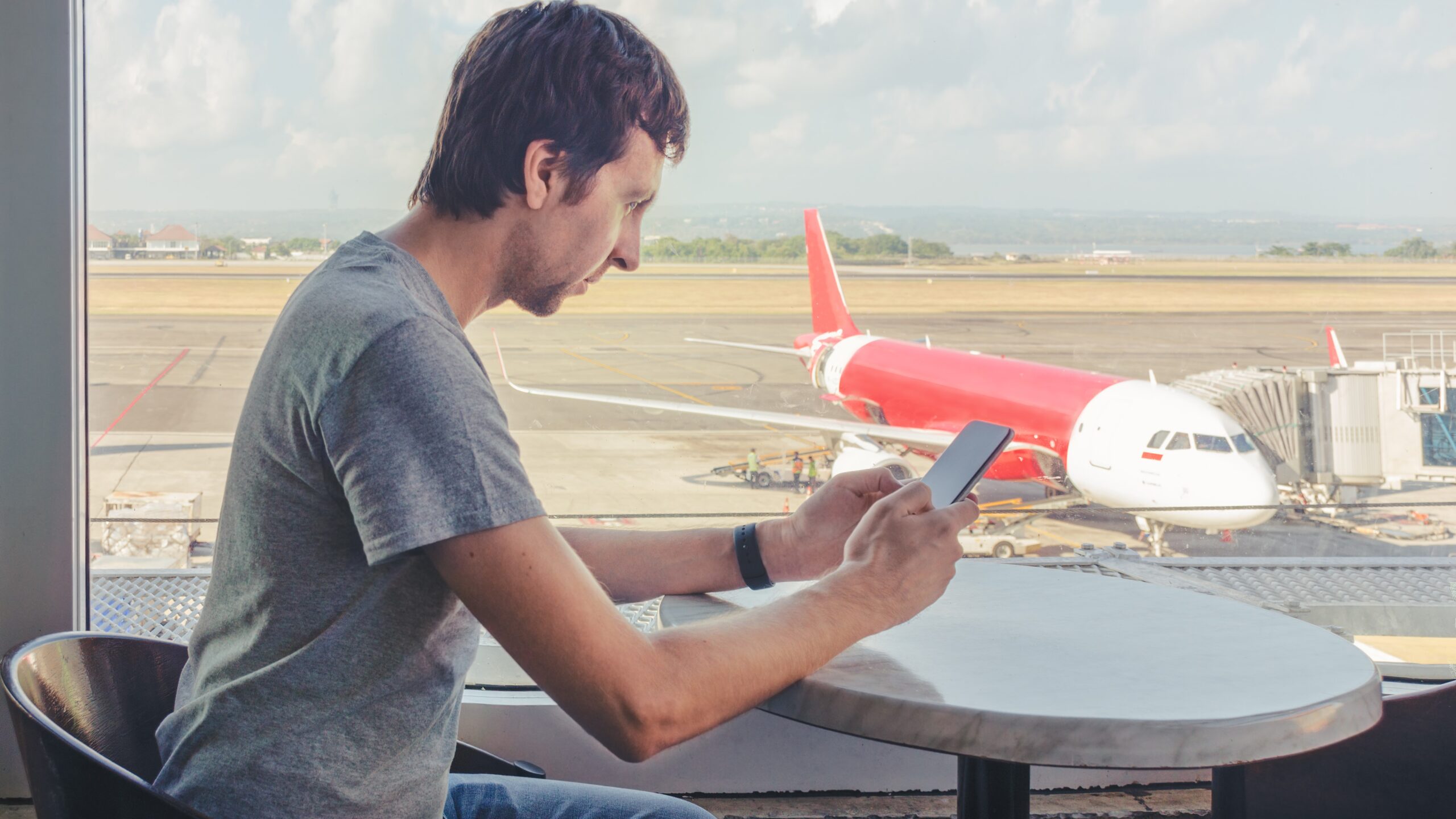Airports can be overwhelming, especially if you’re new to traveling or unfamiliar with the airport layout. Long lines, confusing signs, and crowds of people can leave anyone feeling frustrated. But fear not! Navigating airports like a pro is easier than you might think. Whether you’re a frequent flyer or preparing for your first big trip, this guide will equip you with the knowledge and tips to make your airport experience smooth and stress-free.
Prepare Before You Leave Home
Check Your Flight Status
Checking your flight status before leaving for the airport is an essential step in ensuring a smooth trip. In the rush of preparing for a flight, many travelers overlook this critical task. However, flight schedules can change unexpectedly, and being caught off guard by a delay or cancellation can throw off your entire day. Most airlines offer apps or websites that provide real-time updates about the status of your flight. These tools allow you to check if your flight is on time, if there are any gate changes, or if the flight has been delayed or canceled.
Additionally, checking your flight status early gives you the chance to adjust your plans if needed. For example, if there is a delay, you might decide to spend a little more time at home or grab an extra coffee before heading to the airport. On the other hand, if your flight is ahead of schedule, you can rush to the airport and avoid unnecessary stress. It’s always a good idea to double-check the status again just before leaving for the airport to ensure you’re not caught off guard by last-minute changes.
Checklist for Checking Your Flight Status:
- Visit the airline’s website or app.
- Look for real-time updates such as delays, gate changes, and cancellations.
- Subscribe to notifications for updates about your flight.
- Double-check the status before leaving for the airport.
Organize Your Documents
The last thing you want is to get to the airport and realize you’re missing a crucial document. Organizing your travel documents ahead of time can save you from unnecessary stress and delays. At the very least, you’ll need your passport or ID, flight ticket, and boarding pass. If you’re traveling internationally, you should also have any required visas, health declarations, or customs forms. Keeping these documents together in a folder or a small travel pouch makes them easy to access when you need them, reducing the chances of misplacing something important.
In addition to the essential documents, it’s always a good idea to make copies of everything just in case. If your passport is lost or stolen, having a photocopy can make the process of getting a replacement much faster. Also, remember to have both physical and digital copies of your boarding pass. Many airlines now offer mobile boarding passes, which can be scanned directly from your phone. However, some airports might still require a printed copy, so it’s a good idea to have both versions.
Documents to Organize Before Leaving:
- Passport or ID
- Flight ticket or booking confirmation
- Boarding pass (physical or digital)
- Visa or required travel documents (for international flights)
- Copies of important documents (passport, visa, tickets)
Arriving at the Airport
Arrive Early
Arriving at the airport early is one of the best ways to ensure a stress-free travel experience. As a general guideline, it’s recommended to arrive at least 2 hours before a domestic flight and 3 hours before an international flight. This gives you enough time to check-in, go through security, and make your way to the gate without feeling rushed. Airports can be large and sometimes confusing, so it’s important to give yourself plenty of time to navigate the terminals.
Early arrival also provides you with a buffer in case unexpected delays occur. For example, if you hit traffic on the way to the airport or if there are long lines at check-in or security, arriving early ensures you won’t miss your flight. It also allows you time to relax and take care of last-minute details, like grabbing a coffee or visiting the restroom. Most importantly, arriving early reduces the likelihood of feeling panicked or rushed during your airport experience.
Why Arriving Early is Important:
- Ensures enough time for check-in and security.
- Allows flexibility if unexpected delays occur (traffic, long lines, etc.).
- Gives you time to relax and grab food or refreshments.
- Reduces stress by preventing the risk of missing your flight.
Know the Airport Layout
Airport layouts can be vast and complex, making it easy to get lost, especially in large international airports. Before arriving, take a few minutes to familiarize yourself with the airport layout. Many airports offer interactive maps online, which can help you visualize the entire terminal and locate essential areas like check-in counters, security checkpoints, baggage claim, and your gate. Some airports even provide mobile apps that you can download to guide you through the terminal in real-time.
Knowing the layout in advance can save you valuable time when you’re navigating the airport. If you’re unfamiliar with the airport, it’s easy to waste time searching for signs or walking in the wrong direction. Having an idea of where everything is located will help you plan your route more efficiently and get to your gate faster. Additionally, understanding the layout can help you find nearby amenities like restrooms, lounges, restaurants, or charging stations, ensuring that your experience is as comfortable as possible.
Tips for Knowing the Airport Layout:
- Download the airport’s mobile app or access their online map.
- Identify key locations: check-in area, security, baggage claim, and gate.
- Plan your route to your gate and allow extra time for any detours.
- Familiarize yourself with available amenities like food, lounges, and restrooms.
Checking In and Baggage Drop
Check-In Online
Checking in online is one of the most time-saving options available when flying. Most airlines allow passengers to check in via their website or mobile app, which means you don’t have to stand in long lines at the airport. By checking in online, you can save valuable time and avoid the chaos of crowded check-in counters, especially during peak travel periods. Furthermore, online check-in allows you to select your seat, choose meal preferences, and sometimes even request additional services like extra baggage or priority boarding, all from the comfort of your home or on the go.
Another advantage of online check-in is that you can download your boarding pass directly to your phone. This is especially convenient because it eliminates the need to print a paper boarding pass, which can sometimes get lost or misplaced. Mobile boarding passes are usually accepted at most airports, and they can be scanned directly from your phone at security and boarding gates. Be sure to have your ID or passport ready, as you may still need to show these documents when boarding your flight.
Benefits of Checking In Online:
- Skip long lines at check-in counters.
- Choose your seat, meal preferences, and extra services.
- Save time by downloading your boarding pass to your phone.
- Avoid potential delays or stress when at the airport.
Use Self-Service Kiosks
Many airports have implemented self-service kiosks, which allow travelers to check in, print their boarding pass, and even drop off their luggage without the need for assistance from airline staff. These kiosks are especially helpful during peak hours when check-in lines tend to be longer. All you need to do is follow the on-screen instructions, enter your flight details, and print your boarding pass. If you’re traveling with checked luggage, you can simply proceed to the baggage drop area after completing the check-in process at the kiosk.
Using self-service kiosks can be a huge time-saver, especially if you’re familiar with the airport and know exactly where to go. It also reduces the pressure on airline staff, which can lead to quicker check-in processes overall. However, if you run into any issues or are unsure about the process, there are usually airline agents nearby who can assist you. Keep in mind that while self-service kiosks are convenient, not all airports or airlines offer this service, so it’s always a good idea to check the availability before your trip.
Advantages of Self-Service Kiosks:
- Avoid long check-in lines at the counter.
- Quickly print your boarding pass and luggage tags.
- Drop off luggage without waiting for airline staff.
- Helpful for familiar and efficient travelers.
Know Your Baggage Limits
Understanding your baggage limits is crucial to avoid any surprise fees or delays at the airport. Each airline has its own baggage policy, and it’s important to familiarize yourself with these regulations before packing your bags. Most airlines set limits on both the weight and size of checked and carry-on luggage. For example, many airlines allow one carry-on bag and one personal item, with a maximum weight limit of 7-10 kg for carry-on bags. Similarly, checked luggage often has weight restrictions ranging from 20 kg to 32 kg, depending on the airline and class of service.
To avoid paying excess baggage fees, it’s a good idea to weigh your bags at home using a luggage scale. This ensures that you stay within the weight limit and avoid last-minute stress at the check-in counter. If you’re unsure about the baggage rules, always check the airline’s website for updated baggage policies. Some airlines may allow you to purchase additional baggage allowances in advance, which can save time and money at the airport.
Checklist for Knowing Your Baggage Limits:
- Research the baggage policies of your airline (size and weight limits).
- Weigh your bags at home to avoid excess baggage fees.
- Review the restrictions for carry-on items (liquids, electronics, etc.).
- Consider purchasing additional baggage allowance in advance if needed.
Security Checkpoint
Prepare for Security
The security checkpoint is one of the most stressful and time-consuming parts of navigating the airport. To make the process smoother and faster, it’s crucial to prepare in advance. Start by wearing shoes that are easy to remove, as you will need to take them off when going through security. Avoid wearing excessive jewelry, belts, or other accessories that could set off the metal detector, as this will require additional screening and slow down the process. Additionally, keep all your electronics (such as laptops, tablets, and phones) and liquids organized and easily accessible in your bag.
It’s also helpful to separate your liquids from the rest of your carry-on items. Most airports require liquids to be placed in a clear plastic bag that meets specific size requirements (usually no more than 100 ml per item). Keeping your liquids in a separate compartment makes it easier for you to take them out quickly and avoid holding up the line. If you follow these tips and remain organized, the security process will go much more smoothly, allowing you to move through the checkpoint quickly.
Tips for Preparing for Security:
- Wear easily removable shoes and minimal accessories.
- Keep your electronics and liquids organized in a dedicated section of your bag.
- Ensure liquids are in compliant containers and placed in a clear plastic bag.
- Have your boarding pass and ID ready for inspection.
Follow the Signs
Airports are designed with clear signage that directs you to the security checkpoint. These signs are usually easy to follow and clearly indicate which way to go. It’s essential to stay alert and follow these signs carefully to avoid unnecessary detours or confusion. Many large airports have multiple security lines, so make sure you are heading toward the correct one based on your flight and gate. If you’re in doubt, don’t hesitate to ask an airport staff member for directions.
Paying attention to the signs also helps you stay on track if you need to go to a different section of the airport, such as a duty-free shop or a restroom, before heading to your gate. In some cases, airports also have digital displays that show the current security wait times, which can help you adjust your schedule accordingly. Navigating through an airport efficiently and confidently is all about following the signs and staying organized.
Why Following the Signs is Important:
- Prevents confusion and unnecessary delays in reaching your security checkpoint.
- Helps you find essential areas, such as restrooms or shops, if needed.
- Some airports provide wait time information, making it easier to plan your next steps.
- Saves time and ensures you reach your gate on schedule.
Stay Calm and Organized
As you approach the security area, it’s essential to stay calm and organized. Security lines can often be long, and the process can feel rushed, but maintaining a level head will help you navigate through it more efficiently. Keep your boarding pass and ID ready to show the officer before you proceed. Having your documents prepared in advance saves time and avoids unnecessary delays. Staying organized also means you’re less likely to forget items like your laptop or wallet, which can cause additional holdups if they need to be retrieved.
Additionally, staying calm during the security process helps prevent mistakes, like leaving a bag behind or misunderstanding instructions. Once you pass through the security check, take a moment to gather your belongings before heading to the next step of your journey. Taking a deep breath and staying focused will help you sail through the security checkpoint with ease, ensuring that you’re on your way to your gate as quickly as possible.





